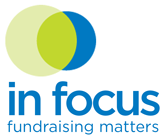Recent Posts
- The Secret Sauce: Strategies & Tactics to Engage Institutional Funders
- What Are Your Donors Saying When They Go Quiet? And How Should You Respond?
- Maximizing Year-End Giving: Strategies for a Successful Fundraising Campaign
- Navigating 2024’s Unique Year-End Fundraising Landscape
- Latest Giving USA Data
Six Tips for Your Nonprofit in the Sharing Economy
June 20, 2016 - originally appeared on American News Report
By: Nadine Gabai-Botero, CFRE and Joan Geiger Wood, CFRE
If you’re one of the many solo or small-shop fundraisers at a nonprofit, this will seem all too familiar:
- You’ve got two grant deadlines next week.
- A cultivation dinner soon after that (and invites have to drop tomorrow!).
- A board member is waiting for your new planned giving strategies.
- Your CEO has a meeting coming up and needs prospect profiles.
- And there’s a long list of donors who haven’t received thank-you letters.
While it may seem tempting to put your head down and just tackle what’s right in front of you – or just cry – there is a better way.
Strategic outsourcing – assigning specialized tasks that can be done by consultants, contractors, or volunteers –is the secret sauce to expanding your capacity just when you need it.
Just like a great Airbnb can be the perfect, affordable getaway, the sharing economy at work can mean a sharp grant writer, prospect researcher, social media consultant, or planned-giving specialist can fill a gap and “join” your team for the right amount of time to tackle a specific project.
SIX TIPS to Boost Your Bandwidth at Work
TIP #1: Have a development plan.
Before bringing on an external resource, you’ve got to define your goals (how much to raise, whom to cultivate, where to spend your time) and think through your overall strategy. Fundraising planning is often an afterthought in a small development shop, but assessing all opportunities – from foundation and corporate giving to individual major gifts and crowdfunding – and creating a plan in advance will give you the roadmap you’ll need when things get intense!
TIP #2: Create a development calendar.
Once you’ve got a plan, create a calendar that includes grant deadlines plus communications and stewardship strategies for the year. Next, you’ll use your roadmap and calendar to identify where and when you should bring in resources.
TIP #3: Prioritize what you can’t get done.
There’s much you can do, but you know you can’t get to everything on the list. Some critical areas that can be improved with outside resources include boosting your grant output with a grant writer, identifying a broader prospect pool through data analysis or prospect research, expanding your audience by working with a social media consultant, establishing a planned-giving program, or strengthening your pipeline of legacy gifts. What’s most important to your organization?
TIP #4: Think through available resources.
Sure, it seems like everything falls on your shoulders, but if you really consider who could help, you may be able to draw on some volunteers, interns, program staff, or board members who are willing to lend a free hand. Once you’ve exhausted that list, it’s time to consider paying for strategic support.
TIP #5: Carve out what you can in your development budget.
Was that a gasp? Yes, it’s true, we said “carve out what you can in your budget.” While we certainly know the Lean & Mean School of Fundraising philosophy that most small nonprofits live by, advocating for targeted resources to raise needed funds for your mission must be a consideration if you want to have an impact and expand support. Remember: You’ve got to spend money to make money.
TIP #6: Find the right resource for your organization.
Fundraising consultants are growing in numbers faster than Uber drivers in downtown DC, and for many of the same reasons. The shift to contracting or consulting is a way to regain control of your schedule, augment full-time income, or work part-time upon retirement. All that flexible expertise can work in your favor.
While there are many resources available, we recommend attending the Bridge to Integrated Marketing Conference to meet resources face to face including those listed in the Association for Fundraising Professionals Resources Directory. You can also reach out to your local AFP chapter or the Direct Marketing Association of Washington to find the right person in your area. You should also stay active on social media – particularly LinkedIn – and network with other fundraisers. There’s a chance they won’t want to share their resources because, as you’ll soon see, once you start building your flexible team, you will do everything to keep them close by for when you need them most.
